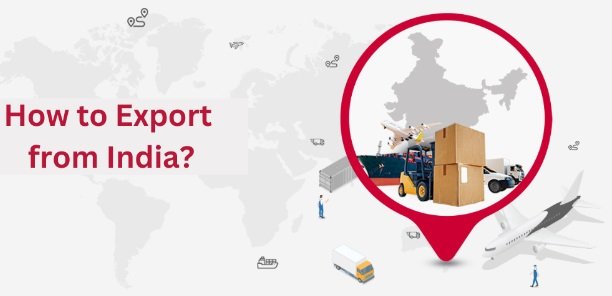It is India that has gradually emerged as one of the major players in the world trade scenario, offering a whole range of commodities to the world market. Whether an expert trader or an amateur exporter, it is very important to learn the right steps. This guide will outline steps on how to export from India in a sequential manner. Let us delve into some of the key aspects of exporting from India.
Overview of Indian Export Policies
Foreign Trade Policy of India defines rules and regulations concerning exports and imports. All indications are that it will encourage the diversification of foreign trade by facilitating the procedures for export. Normally, FTP is extended from time to time, and, as such, forms the guiding framework for exporters. In order to see that export prone complies with the requirements, exporters must follow the rules prescribed under the FTP. For those exploring how to export from India, setting up an export-oriented unit involves specific preliminary steps, including forming an entity and obtaining the necessary licences. This guide will list these requirements; right from forming an entity to attaining market success.
Initiating Exports from India
The major steps involved in the process are highlighted below.
1. Establishing an Organization
Setting up the business entity is the very first step toward commencing the export journey. An exporter can register as a sole proprietorship, partnership, or company.
2. Opening a Bank Account
A current bank account in the name of the business with a bank authorised to deal in foreign exchange should be opened for facilitating all financial transactions related to the exports.
3. Get a PAN – Permanent Account Number
Every exporter has to have a PAN. It’s basically an identification number assigned by the Income Tax Department.
4. Acquisition of Importer-Exporter Code (IEC)
IEC basically, is necessary to export any type of goods from India. This may be availed online from the DGFT for a small fee by submitting the prescribed documents. The IEC represents the onetime identification number for exports and imports.
5. Registration Cum Membership Certificate (RCMC)
An exporter also needs an RCMC, enabling him/her to get all the benefits under the FTP and access to the several Export Promotion Councils.
6. Product Selection
The exporters have to choose what products they want to export and with great care to ensure that such products are in the current market trend and demand. Any product that is not within the category of restricted or prohibited items can be exported freely.
7. Target Market Identification
A number of factors are analysed to identify target export markets: market demand, prices, and competition being among them. Research will help identify countries that are suitable for the expansion of products. Government export promotion bodies also offer useful support.
8. Find Buyers
The onus of searching for buyers lies with the exporter. This may be through participation in trade fairs, B2B portals, or exhibitions. Creation of a multilingual website comprising an attractive product catalogue can also make an overseas buyer come to them.
9. Sampling and Pricing
Product samples are an important part that comes with export orders. The buyers are to be assured about the quality and features of the product. Pricing decisions, including terms like CIF (Cost, Insurance, and Freight), are to be done appropriately.
10. Negotiation and Documentation
It is important to negotiate the price and terms of sale with the buyers. Contracts arrived at through negotiation should be done in writing. The risk of default by international buyers may also be covered under different policies offered byExport Credit Guarantee Corporation (ECGC).
Processing an Export Order
Once all the preparatory work is done, the succeeding painstaking process is the export order processing. This covers several steps:
a. Order Confirmation
These details, upon receipt of the export order, have to be confirmed by the exporter, like specification, conditions of payment, packaging, and delivery schedule, etc. There should be proper documentation with an official contract in front of the parties concerned before the process starts.
b. Goods Procurement
After confirmation, the goods have to be sourced or manufactured. The procurement process has to be done in a way that ensures quality to match international standards.
c. Quality Control
In the competitive world of exports, quality is a major factor. For special products like agro and food items, it may require quality inspection certificates from accredited agencies. Exporters must secure product quality through regular checks.
d. Labelling, packaging and marking
Proper labelling, packaging, and marking of goods are very vital in exportation processes. The label should contain all the information such as the content of the package, handling instructions, and the weight of the package. Proper packaging reduces risks during transportation.
e. Insurance
Insurance is amongst the essential topics of how to export from india. Marine insurance is generally required while goods are in shipment to cover any damage that may occur, whereas exporters should consider appropriate insurance policies.
f. Customs Procedures
Goods being packed and ready, the customs clearance procedure has to be performed, which involves the filing of the Shipping Bill with Customs and availing the services of goods examination by customs officers, if required. Proper documentation and a smooth customs process help avoid unnecessary delays.
Documentation Required for Export
One of the most vital parts of any export is the documentation. Following documents must be prepared:
• Bill of Lading/Airway Bill
• Commercial Invoice
• Shipping Bill or Bill of Entry (in case of imports)
• Packing List
• Certificate of Origin
All these documents must be submitted to the bank for processing export payments. Accuracy in documentation avoids any problem in realising the payments.
Benefits of Exporting through E-Commerce Platforms
Third-party e-commerce platforms, like Amazon Global Selling, are just great to extend your circle of potential customers, not to mention all the advantages:
a. Global Reach: The products of the sellers can be viewed by millions of buyers from every corner of the world.
b. Ease of Payment: Export payments through e-commerce are not cumbersome because, generally, the e-commerce sites take care of the currency exchange, and sellers get paid in INR.
c. Support for Compliance: Also, the platforms support the understanding of documentation requirements, hence allowing the sellers to be compliant with international standards.
Endnote
Exporting from India offers some exciting opportunities for reaching beyond the shores of merely domestic business and into a global market. In general, every business venture requires proper preparation at various steps, right from the very beginning of registration to finding international clients. These stylistic steps will be about obtaining key registrations like IEC and PAN, identification of markets and buyers, conformation to quality standards, and handling documentation effectively.
Moreover, with the help of different platforms like Amazon Global Selling, doing business globally has become quite easy and smoother than ever, reducing complexities in exports and increasing market reach.
You can get a strong entry into the international market by making full use of available resources in regard to government export promotions and e-commerce platforms.



